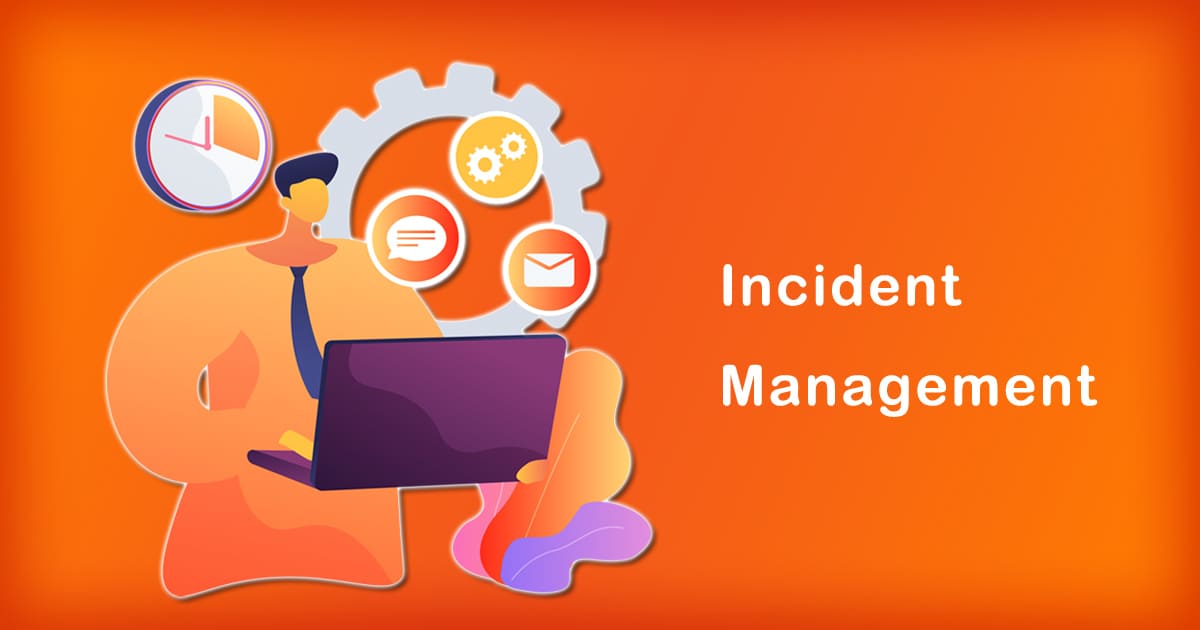Introduction
Incident management is a crucial component of any organization’s IT infrastructure. It refers to the process of detecting, analyzing, and resolving incidents that occur within an organization’s IT systems. The goal of incident management is to minimize the impact of incidents on the organization’s operations and to restore normal service as quickly as possible.
In India, incident management is becoming increasingly important as more and more organizations rely on IT systems to carry out their day-to-day operations. In this blog post, we’ll discuss everything you need to know about incident management, including its definition, its importance, and its best practices.
What is Incident Management?
Incident management is the process of responding to and resolving incidents that occur within an organization’s IT systems. Incidents are defined as any event that disrupts or threatens to disrupt normal IT service. Incidents can be caused by a wide range of factors, including hardware failure, software bugs, cyber attacks, and human error.
The incident management process typically involves four stages: detection, analysis, resolution, and recovery. The detection stage involves identifying incidents as soon as they occur. This can be done through automated monitoring systems or through user reports. The analysis stage involves gathering information about the incident and assessing its impact on the organization’s IT systems. The resolution stage involves developing and implementing a plan to address the incident and restore normal service. The recovery stage involves verifying that the incident has been fully resolved and that normal service has been restored.
Why is Incident Management Important?
Incident management is important for several reasons. First, it helps organizations minimize the impact of incidents on their operations. By responding quickly and efficiently to incidents, organizations can reduce downtime, prevent data loss, and maintain the trust of their customers and stakeholders.
Second, incident management helps organizations identify and address underlying issues that may be causing incidents. By analyzing incidents and identifying their root causes, organizations can implement measures to prevent similar incidents from occurring in the future.
Finally, incident management helps organizations comply with regulatory requirements and industry standards. Many industries have specific regulations and standards that organizations must comply with to protect sensitive data and maintain the integrity of their operations. Incident management is a key component of these requirements.
Best Practices for Incident Management
To ensure effective incident management, organizations should follow several best practices. These include:
1. Developing a formal incident management process:
Organizations should develop a formal incident management process that outlines the steps to be taken in the event of an incident. This process should be documented and communicated to all relevant stakeholders.
2. Establishing roles and responsibilities:
Organizations should establish clear roles and responsibilities for incident management. This includes identifying a dedicated incident manager and defining the responsibilities of other stakeholders involved in the process.
3. Implementing automated monitoring systems:
Organizations should implement automated monitoring systems to detect incidents as soon as they occur. These systems can help organizations respond quickly and efficiently to incidents.
4. Conducting regular incident management training:
Organizations should conduct regular incident management training for all relevant stakeholders. This can help ensure that everyone understands their roles and responsibilities and is prepared to respond effectively to incidents
5. Performing regular incident reviews:
Organizations should perform regular incident reviews to identify underlying issues and opportunities for improvement. These reviews should be documented and used to inform the organization’s incident management process.
Conclusion
In conclusion, incident management is a critical component of any organization’s IT infrastructure. It helps organizations minimize the impact of incidents on their operations, identify and address underlying issues, and comply with regulatory requirements and industry standards. To ensure effective incident management, organizations should follow best practices such as developing a formal incident management process, establishing roles and responsibilities, implementing automated monitoring systems, conducting regular incident management training, and performing regular incident reviews. By following these best practices, organizations can improve their incident management capabilities and better protect their IT systems and operations.








